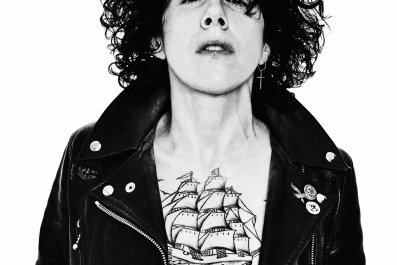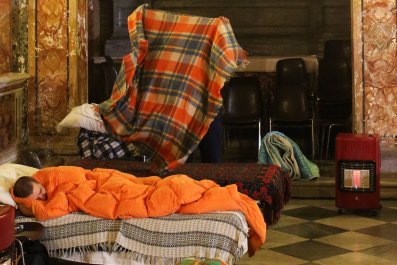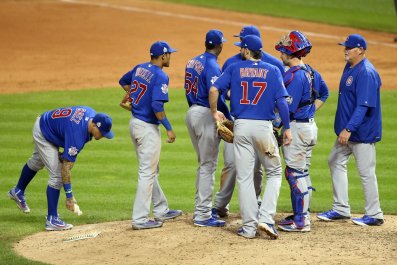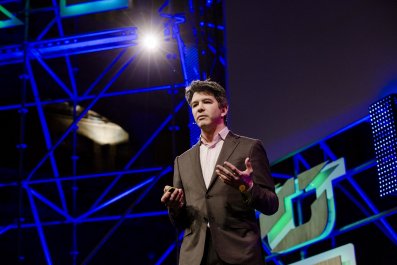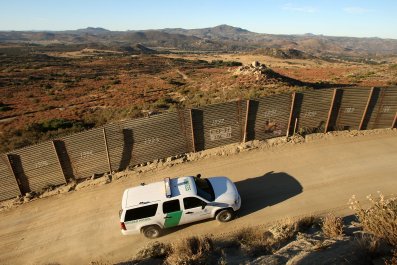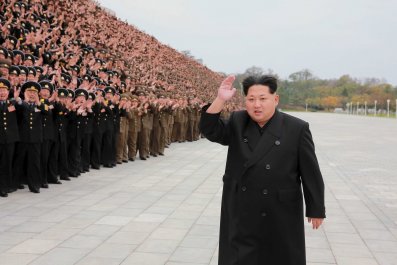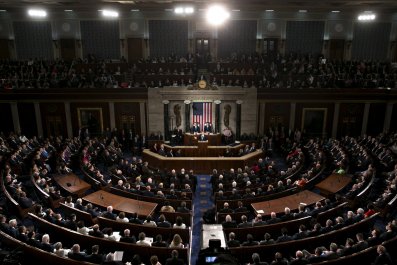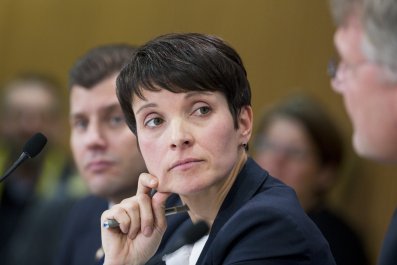The towering terrors of Pol Pot's Cambodia are hard to see in today's Phnom Penh, where traffic-choked streets and wild development have seemingly erased the past, and some have grown so wealthy that a car dealership is about to start importing Bentleys from Britain.
Yet the Khmer Rouge genocide, which killed 1.7 million people—nearly a quarter of the country's population—from 1975 to 1979 still looms over this tiny Southeast Asian nation, where many still wake up in the middle of the night screaming and recalling the horrors. That's why so many here in this capital city seemed profoundly moved when Oscar-winning actress Angelina Jolie invited thousands to the local premiere of her new film, First They Killed My Father, which is about the genocide as seen through the eyes of an orphaned little girl.
The film was shown at the indoor arena of the city's National Olympic Stadium, a magnificent building where General Charles de Gaulle made his famous speech in 1966 calling on the United States to withdraw its troops from Vietnam or face disaster. The Americans did not heed his words, and the war dragged on for another nine years, spilling over the border into Cambodia and paving the way for the murderous Khmer Rouge.
I remember how the stadium looked in early 1975 as rockets smashed into the capital; the building served as a makeshift clinic, overflowing with the wounded and dying as Khmer Rouge leader Pol Pot's peasant soldiers tightened their grip on the city. Later, the dictator and his henchmen used it for political rallies to glorify their revolution in the manner of Hitler, Stalin and Mao.
As the sun set and Jolie's film flashed across the screen, bats wheeled beneath the high ceiling and the audience sat in the dusty air, transfixed by a wrenching tale full of love and humanity. Some in the audience, like the woman next to me, sobbed throughout the movie.
Jolie says she was determined to make this film, driven by her love for the country and for her son Maddox, a Cambodian orphan she adopted in 2002. "Without Cambodia," she says, "I may never have become a mother."
Jolie directed the film, and she produced it along with award-winning French-Cambodian director Rithy Panh, who lost his parents and brother in the genocide. He ensured that the film's portrayal of the country's descent into hell did not blot out Cambodia's ravishing beauty and its wonderful people. Throughout the film, for instance, we see lotus flowers blooming in slime and mud, a symbol, perhaps, of hope amid the horrors.
First They Killed My Father isn't the first feature film to explore the Khmer Rouge atrocities; in 1984, Roland Joffé directed The Killing Fields, a movie in which I am a character. However, what's remarkable about Jolie's film, aside from the powerful story, is its authenticity: The movie was shot in Cambodia, with an all-Cambodian cast, many of whom are survivors or the children of survivors, and all the dialogue is in the Cambodian language.
The film is told from the point of view of a child, which is significant because in Pol Pot's Cambodia even a child's laughter was against the law. The Khmer Rouge killed doctors, professionals, even those whose soft hands or spectacles suggested they could read. Their executioners were often child soldiers, whom Pol Pot saw as tiny vessels who could be easily indoctrinated.
The film was inspired by the memoir of the same name, published in 2000 and written by Loung Ung, who, as a little girl, endured the murder of her father, mother and two sisters by the Khmer Rouge. Loung's character is played by Sareum Srey Moch, a Cambodian girl who grew up in the Phnom Penh suburbs. She was 7 when the film was made and was barely as tall as the AK-47 she brandishes in many of the scenes.
I was one of the few journalists in Phnom Penh when the city fell, so I saw what happened then, and as I watched the film, I was overwhelmed by its accurate re-enactments—especially of how the Khmer Rouge emptied the city at gunpoint, forcing roughly 2 million people into the countryside. There, they toiled and died while attempting to create Pol Pot's agrarian utopia.
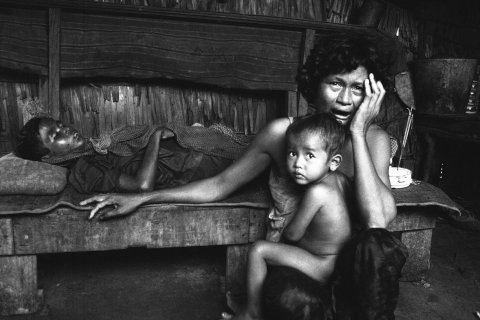
Four years later, that disastrous social experiment failed, and the Vietnamese military and disaffected Khmer Rouge fighters drove Pol Pot's regime from power, installing a new, Vietnamese-backed government. The memories of what happened remain fresh for many here. For Panh, the film's co-producer, the movie offers an important lesson about the country's need for reconciliation, not revenge. "The suffering from this genocide is so great that it exceeds the desire for vengeance," he says, which is why he advised Jolie to change an incident in Loung's book in which a crowd beats to death a captured Khmer Rouge soldier; in the film, he is battered but survives. This does not mean, however, that the victims have to forgive the killers. It just means they find a way to move on.
Jolie and Panh hope the film, which will be available on Netflix in the fall, will help with that. Some Cambodians who have seen the film told me they felt less burdened by the past, more willing to talk to their children and grandchildren about the horrors they witnessed. As Panh puts it, "We have got out of this hell, despite everything. At last, we can talk and discuss what happened and...begin a process of reconstruction."
Correction: A previous version of this story incorrectly referred to Rithy Panh as the director of First They Killed My Father. He was one of the film's producers.





